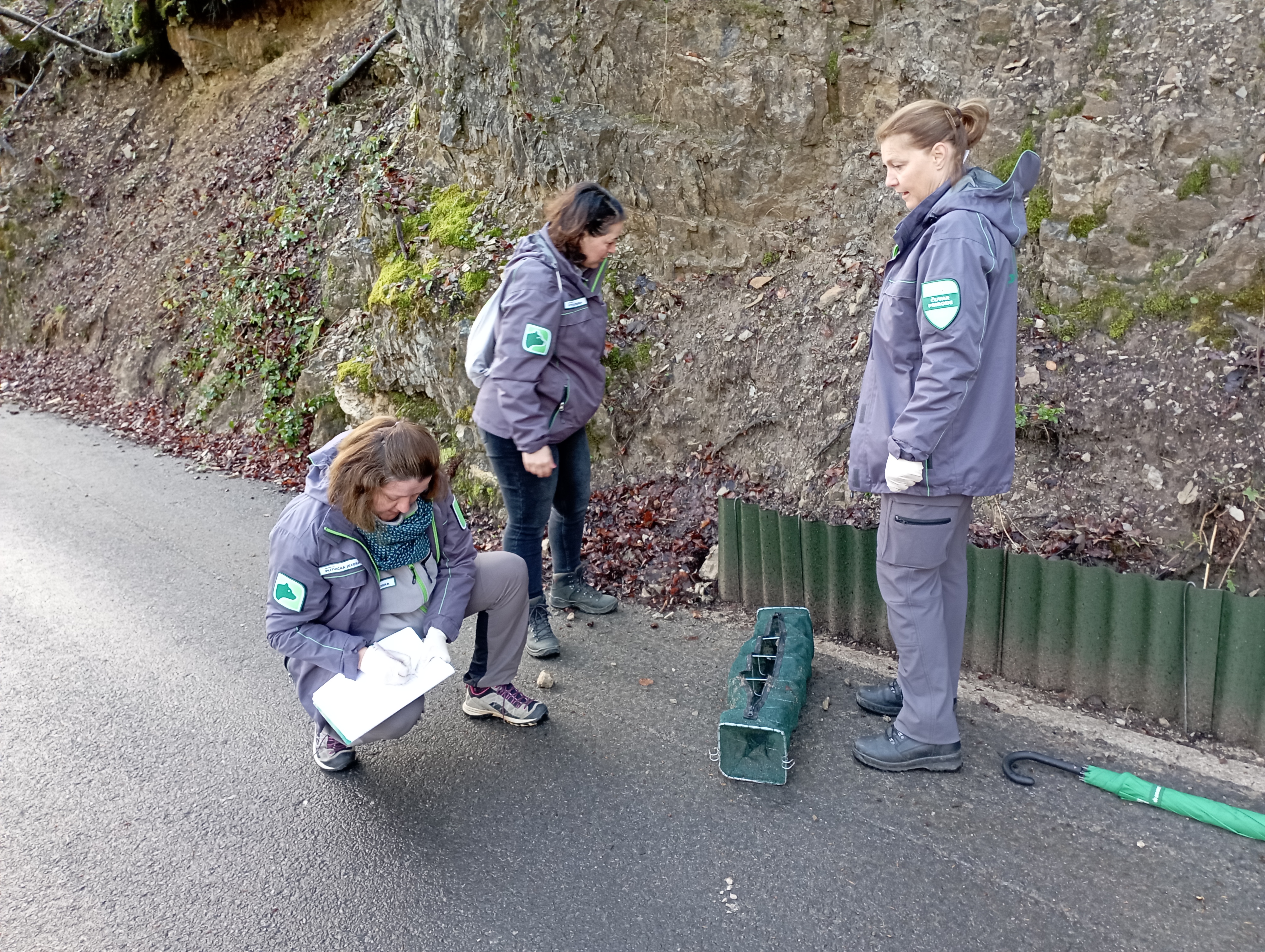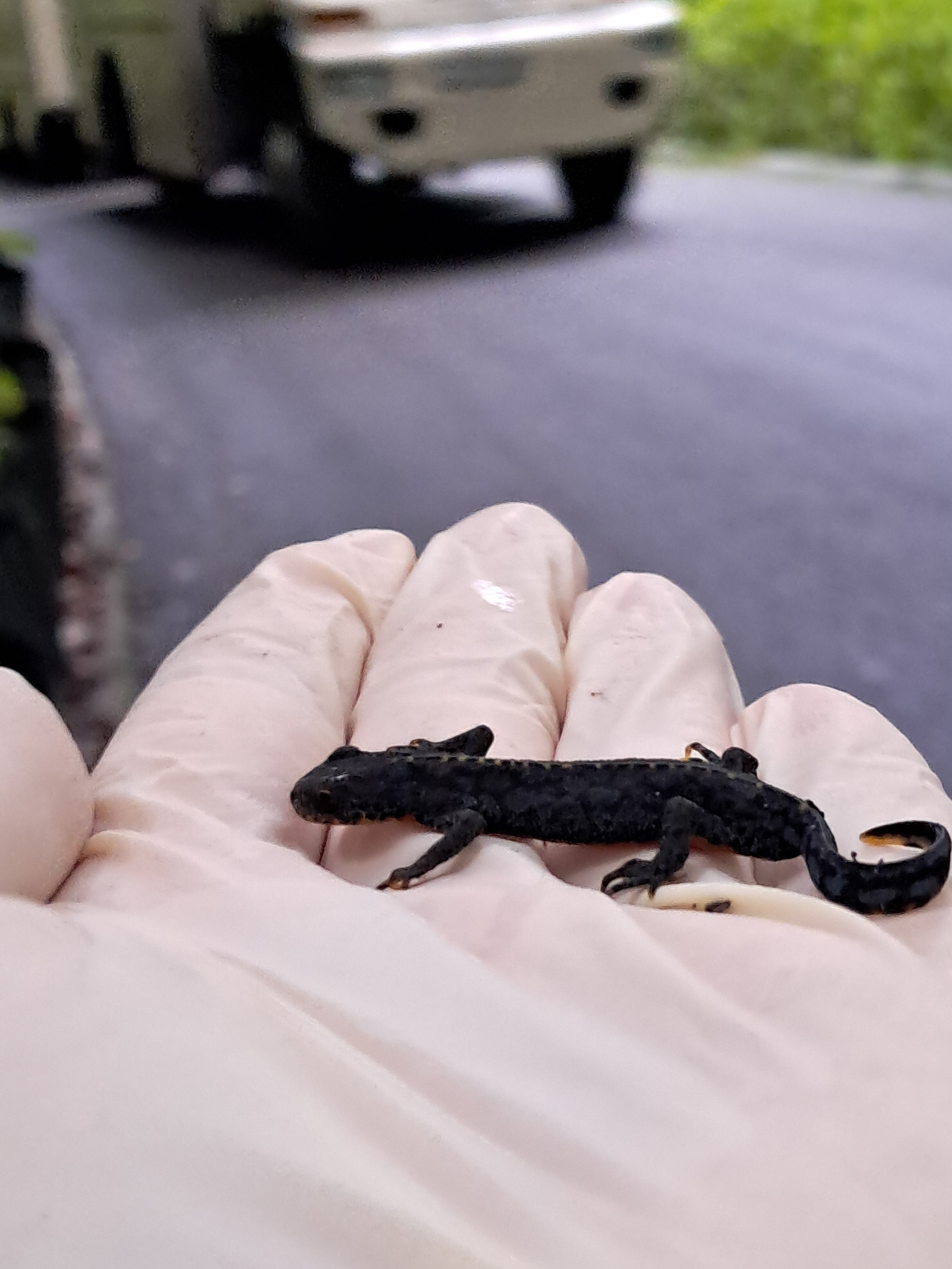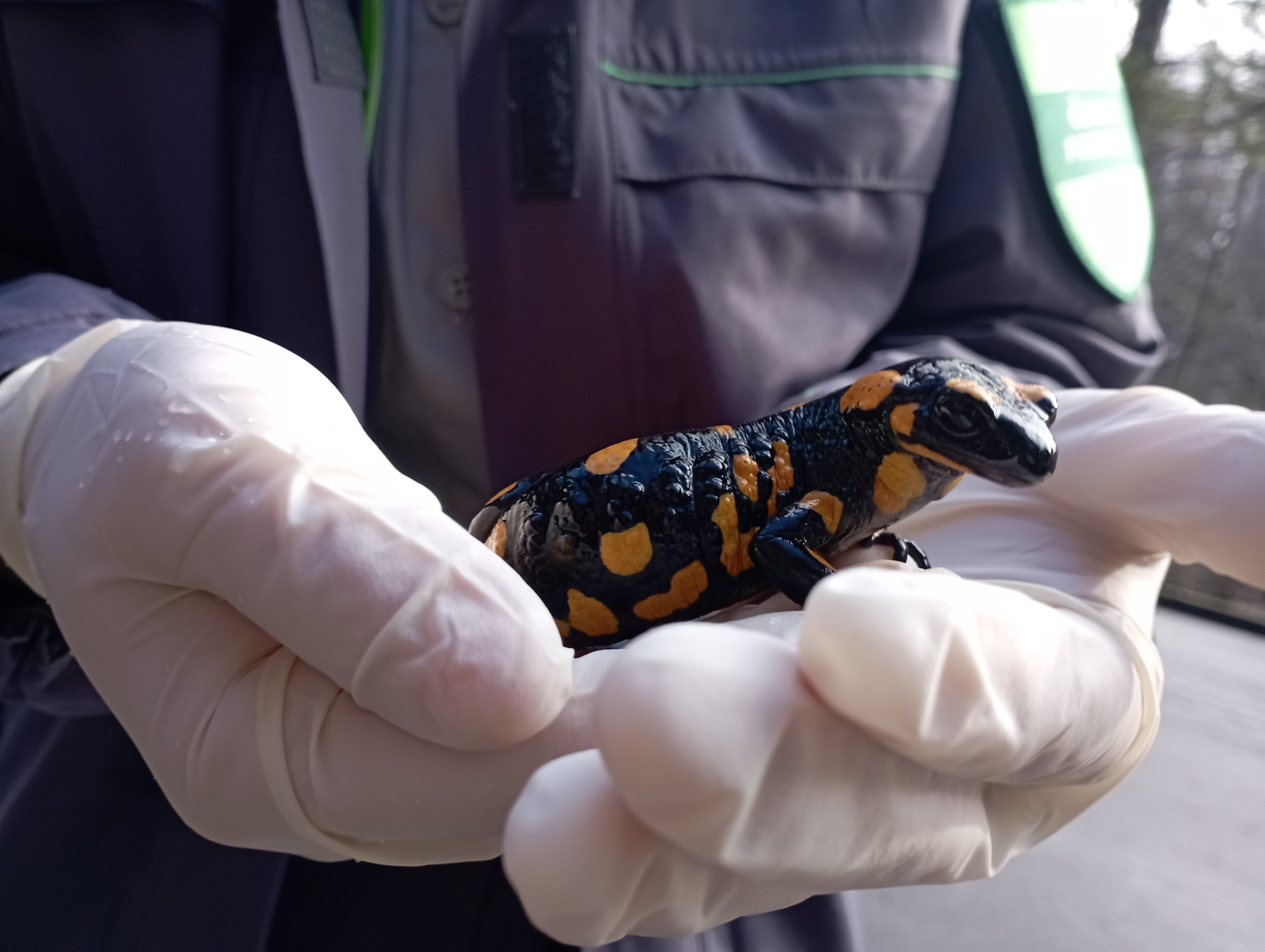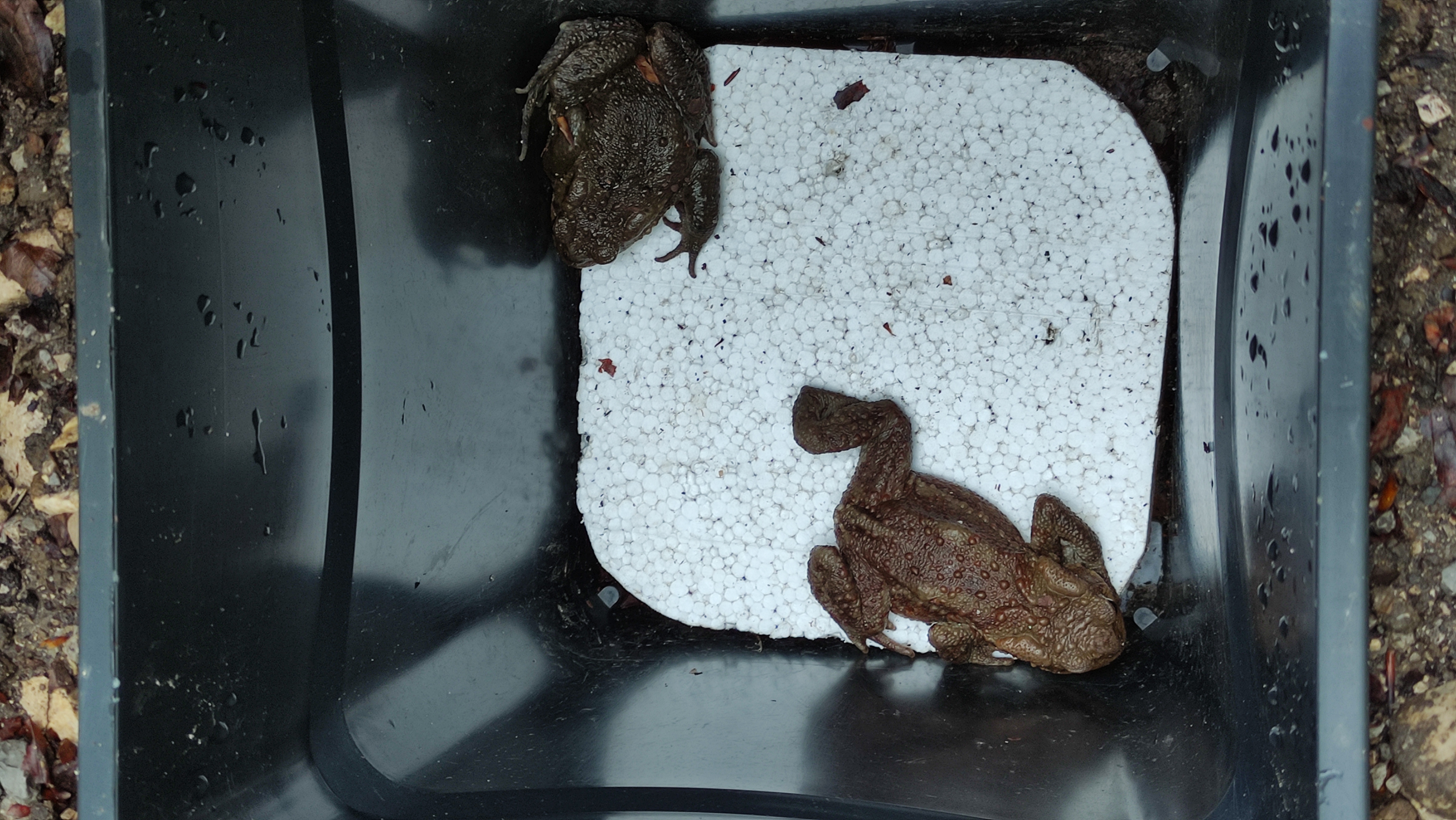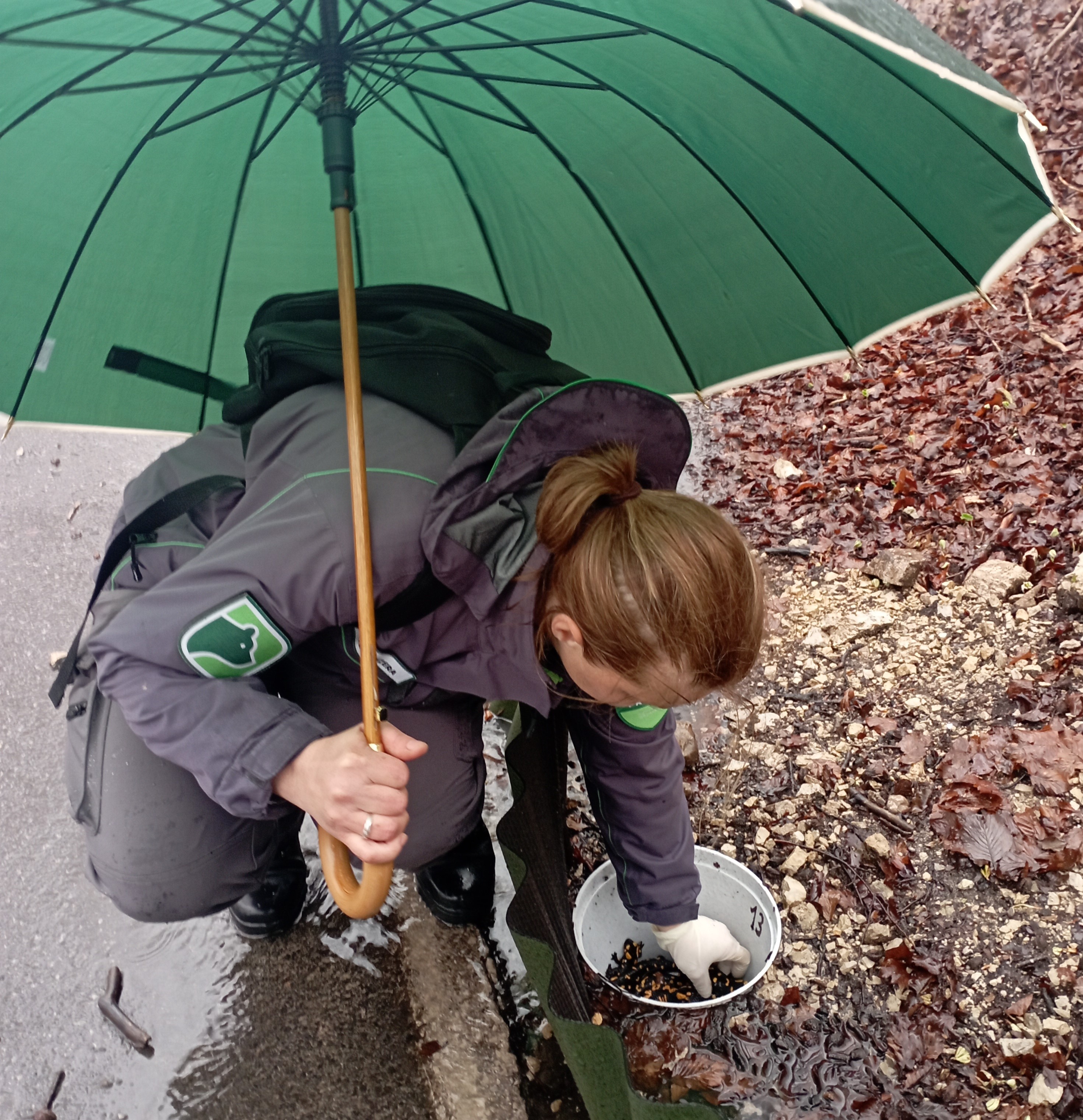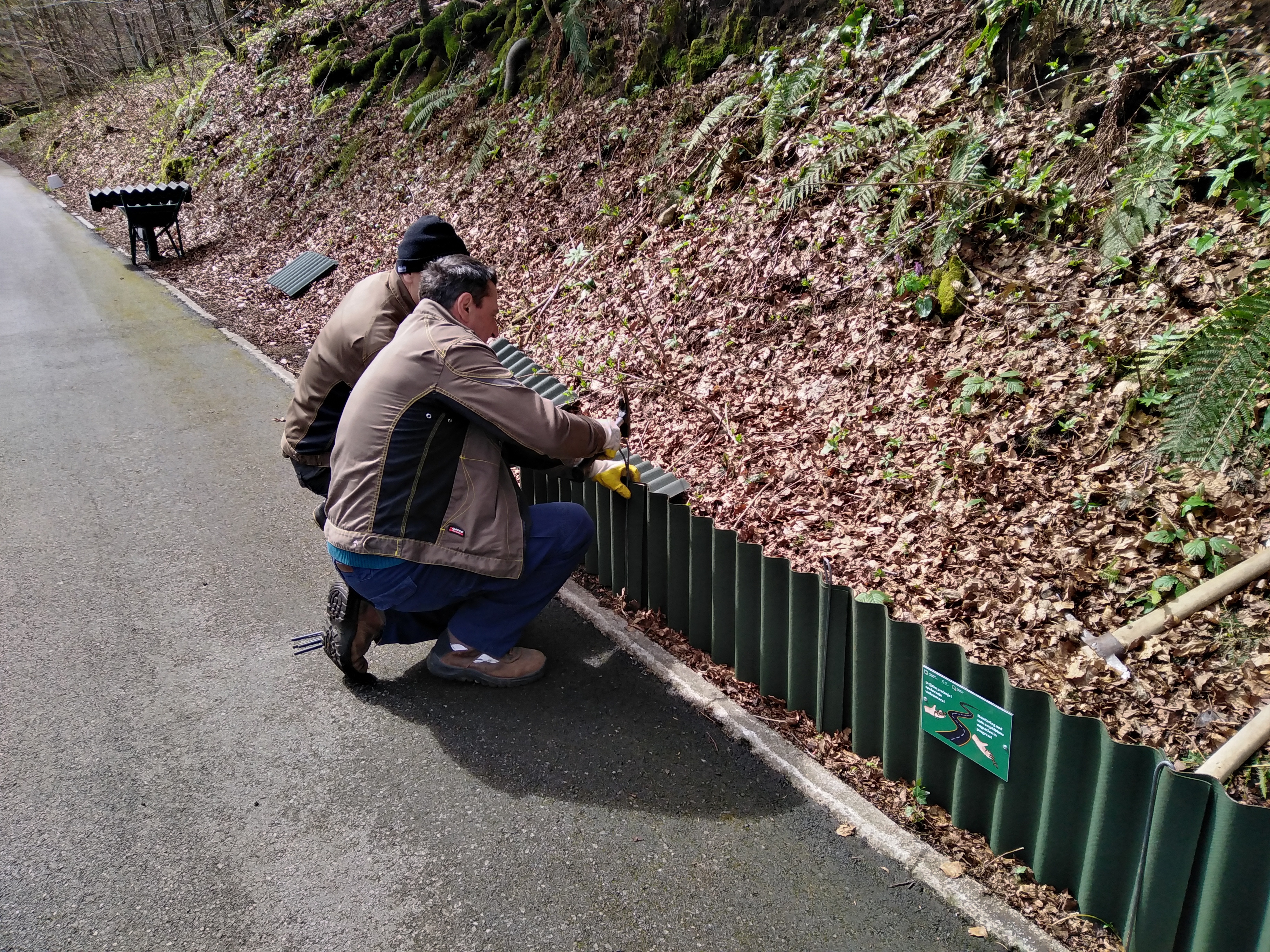With the end of the autumn monitoring of the amphibian migration, with a special emphasis on the fire salamander, we have successfully completed the second year of monitoring and rescuing amphibians from the local road. While the last data of the spring and autumn patrols are being processed, we can already determine that we recorded a total of 7 species of amphibians in the pitfalls and funnel traps, and the most abundant was the fire salamander (Salamandra salamandra). From 2023 and with the end of monitoring in 2024, we found a total of 808 amphibians in pitfalls and funnel traps (of which the proportion of fire salamanders is 41%), which tells us that the National Park is a favorable habitat for this group of animals. For the fire salamander, however, some pitfalls or funnel traps proved to be more active in terms of the number of individuals caught, and we noticed differences between annual migrations, but further data analysis is definitely needed, which we will soon publish on our website. Fire salamander photos that we collect during field patrols are further processed through the Amphibian and Reptile Wildbook software to determine if individuals are captured more than once, and we photograph each individual amphibian for the database. Unfortunately, a certain number of roadkilled individuals of the fire salamander were also recorded during two years of monitoring (150 individuals), while all those encountered crossing the road (76 individuals) were safely transported during our morning and evening patrols.
The monitoring of migrations and relocation of amphibians from the road would not have been possible without the valuable hands of our employees who participate in the installation of temporary fences on eight sections along the road along with the digging of pitfalls and the installation of funnel traps. As with all monitoring in the National Park, without the activities of employees there is no collection of quality and significant data for the protection of both different habitats and species.
Be sure to continue following us if you are interested in the specific life of our amphibians!

